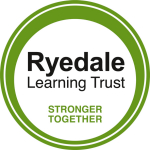Feedback Policy
Students’ books will be collected, reviewed and/or marked periodically. It is not necessary for every single question to be marked in detail but where a common misconception occurs feedback will be provided to allow each student to effectively improve.
A variety of feedback techniques could be utilised:
-
- Pupils mark their own work under supervision. This ensures that pupils see where marks are gained and lost and also emphasises the importance of showing working in the solution to a problem. It is also useful in giving a teacher a quick check on how a group is performing with a practice exercise of short questions testing retention and the use of basic techniques.
- Students exchange books and mark their partners. This enhances the understanding of both students by discussing the method and answer. A comment should be written by the marker.
- Students provided with answers to self-regulate learning. Students can discuss with their peers which aspects of their work was correct or incorrect. The answers provide immediate feedback and this helps to avoid making multiple mistakes or embedding incorrect methods.
After each assessment (approximately every half-term) students will complete an analysis sheet to highlight specific strengths and weakness. These will be compiled in their orange feedback book. This book can be used alongside A2L reports to monitor progress and support with further revision leading up to summer exams. A ‘RAG marking’ colour coding system is used. There is also space for pupil self-reflection, a parental comment and a teacher comment.

Students should be given appropriate time to effectively respond to feedback given. This may be an additional homework task or class time might be used. Response to feedback requires careful thought and should be carefully considered to be effective.


 Ryedale School is a partner in and co-ordinator for the Yorkshire Teaching School Alliance.
Ryedale School is a partner in and co-ordinator for the Yorkshire Teaching School Alliance.